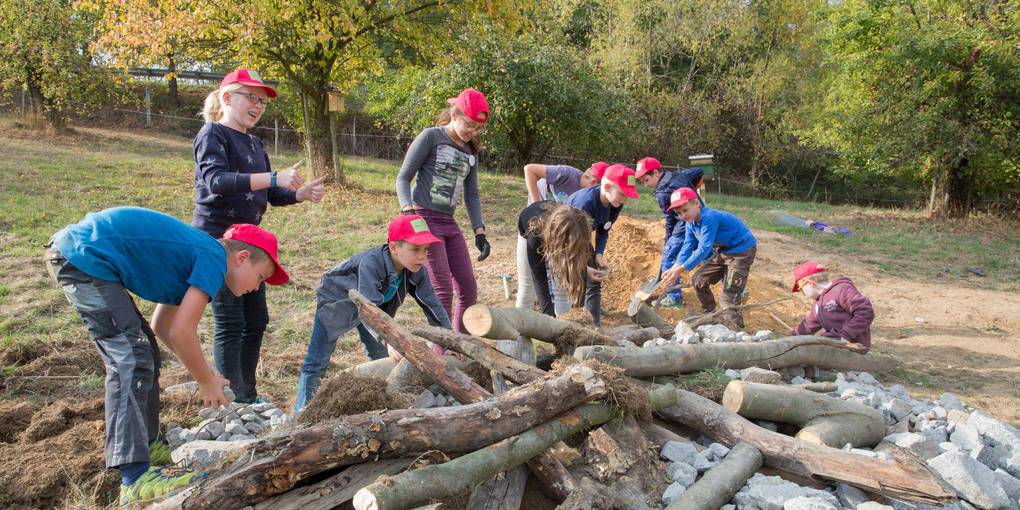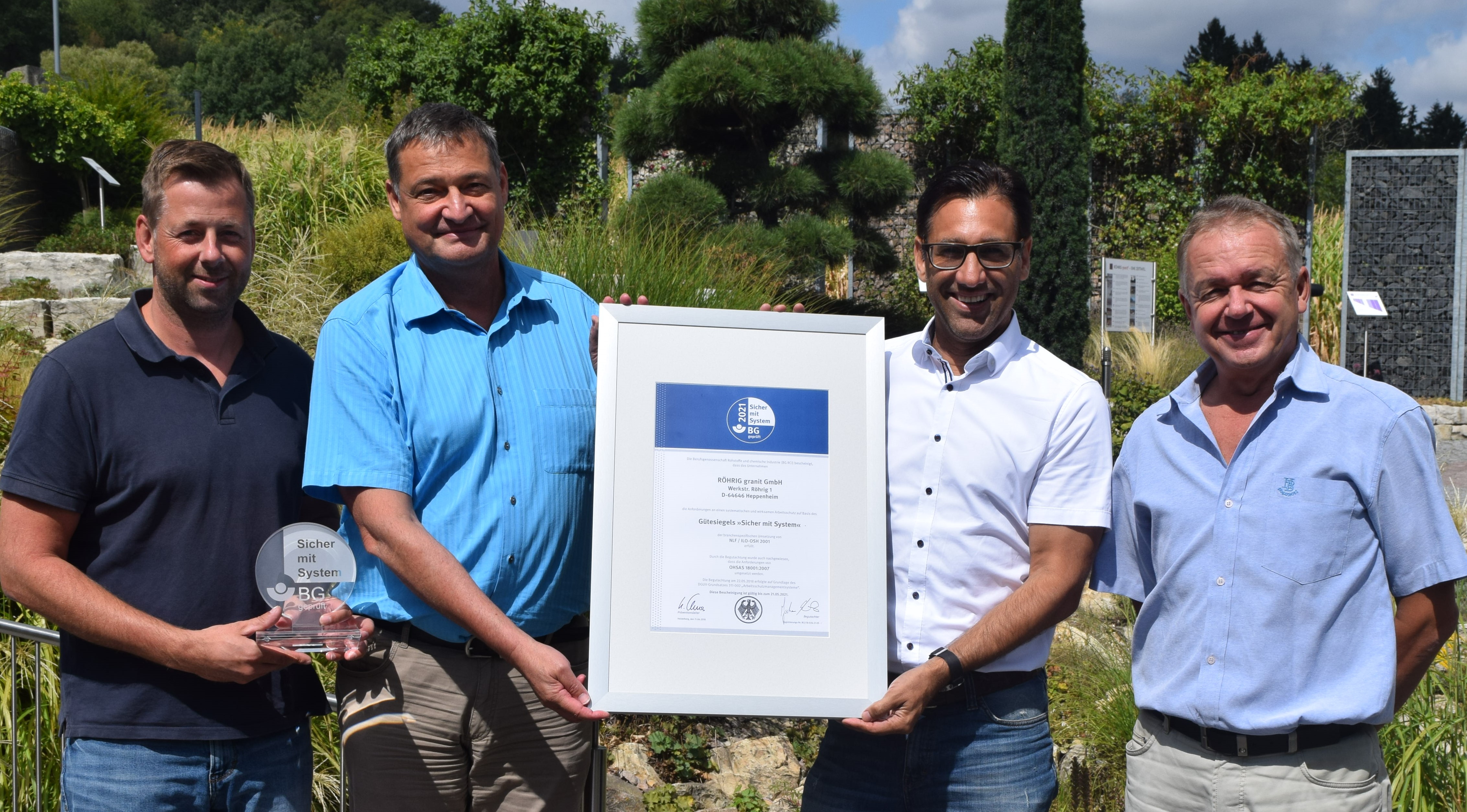
Twelve-year-old Jette is curious. Will the biotope that she has just built with the other children really become a habitat for common wall and sand lizards next spring? She definitely wants to come back and see for herself. Paul is enthusiastic about playing and working in the nature. “Always this work”, jokes ten-year-old Jule, who is taking a short break with Marie. The others are picking up apples.
The steeply sloping terrain on Sonderbach’s Werkstraße, which Röhrig Granit has bought, is around 600 square meters in size. The quarry is not being extended here. Together with Nabu, the company once again wants to set an example in terms of nature conservation and sustainability. On Tuesday, industrious helpers between the ages of seven and twelve are busy turning the large meadow into a paradise for animals and plants. It’s workshop time again for children.
Elaborate chaos of stones and branches
There were more than 180 registrations in the summer for the one-week holiday experience, but only 85 children can participate due to lack of space. Those who didn’t get a chance had the opportunity to spend two exciting and instructive days on nature and nature conservation during the autumn school holidays. A total of 33 girls and boys from the district were enthusiastically participating. They were looked after by Günther Hagemeister of the Nature Conservation Association (Nabu) of Heppenheim, and the experienced Röhrig team, consisting of Birgitt Bauer, Marco Röhrig, Jovita Röhrig, Mario Helfert, Rüdiger Hamann, and Nicole Schroeter.
There, they first had to schlepp stones and small trunks: not far from the bee colony and the richly bearing apple trees, a habitat for all kinds of small animals was created. What at first glance looks like a pile of stones and branches thrown together is built with a lot of know-how. Because if you do something wrong, the lizards do not accept the construction, and stay away. Heat islands were created, a substructure of sand and rock gravel for laying eggs, grass sods for frost-free wintering. On wood, the nimble, change-warm little animals are better camouflaged. On the outside, plants are seeded to provide food for butterflies. During his foray across the large meadow, Hagemeister was quite surprised to see the rare dusky large blue fluttering there. They are usually found where there are marsh meadows. The small butterfly is characterized by the fact that it lays its eggs in the buds of the burnet; the larvae fall to the ground, are carried by ants into their den, where they feed on the ant brood.
The children planted four trees together to start a meadow for orchards: pear, apple, cherry, and quince trees. More will follow in November. There are fewer and fewer orchards, Hagemeister explained.
In the afternoon, the children pressed their own juice from the apples they had harvested themselves. Even more “wild corners” are to be created over the next few months. In September, a delegation from the Hessian Ministry of the Environment examined the terrain, found it suitable, and praised the joint commitment of Nabu and the company.
A ROLE MODEL
Günther Hagemeister explains that the Röhrig quarry plays a pioneering role for the whole of Germany in terms of protecting an active quarry as an FFH area – a flora-fauna habitat – and in terms of reconciling mining and nature conservation. Whether eagle owl or yellow-bellied toad, for which the children have created three pools, protected animal species prove that it works. In the meantime, some quarry operators have followed suit. They have now also realized that nature conservationists are not enemies – and vice versa. Hagemeister himself finds the view into the history of the Earth that such a quarry provides extremely exciting. (rid)
On Tuesday morning, after having had breakfast together, we started to create things, including nesting boxes, which were later hung up. Then, we went into the terrain.
https://www.echo-online.de/lokales/bergstrasse/heppenheim/refugium-fur-flinke-reptilien_19112565 (October 10, 2018)





